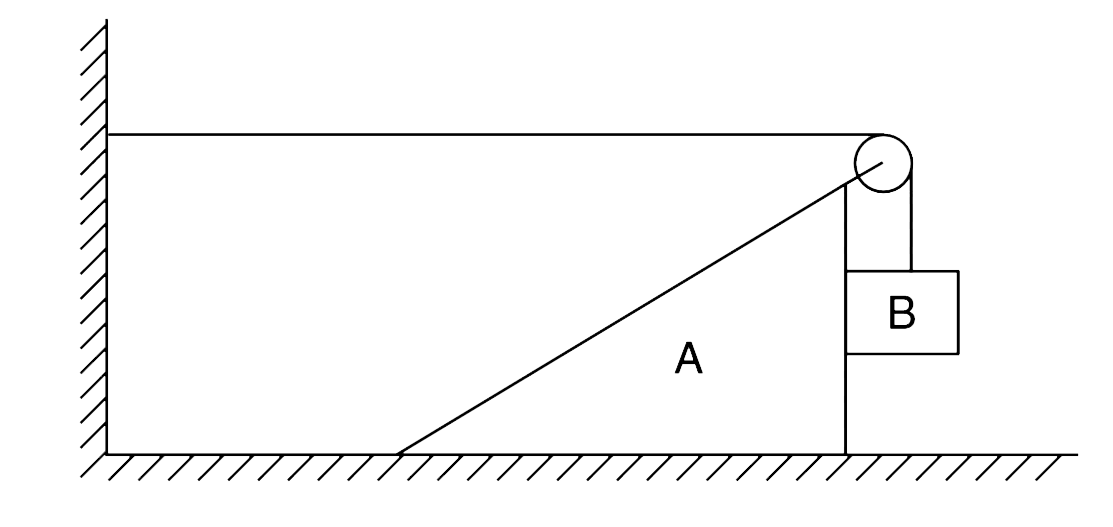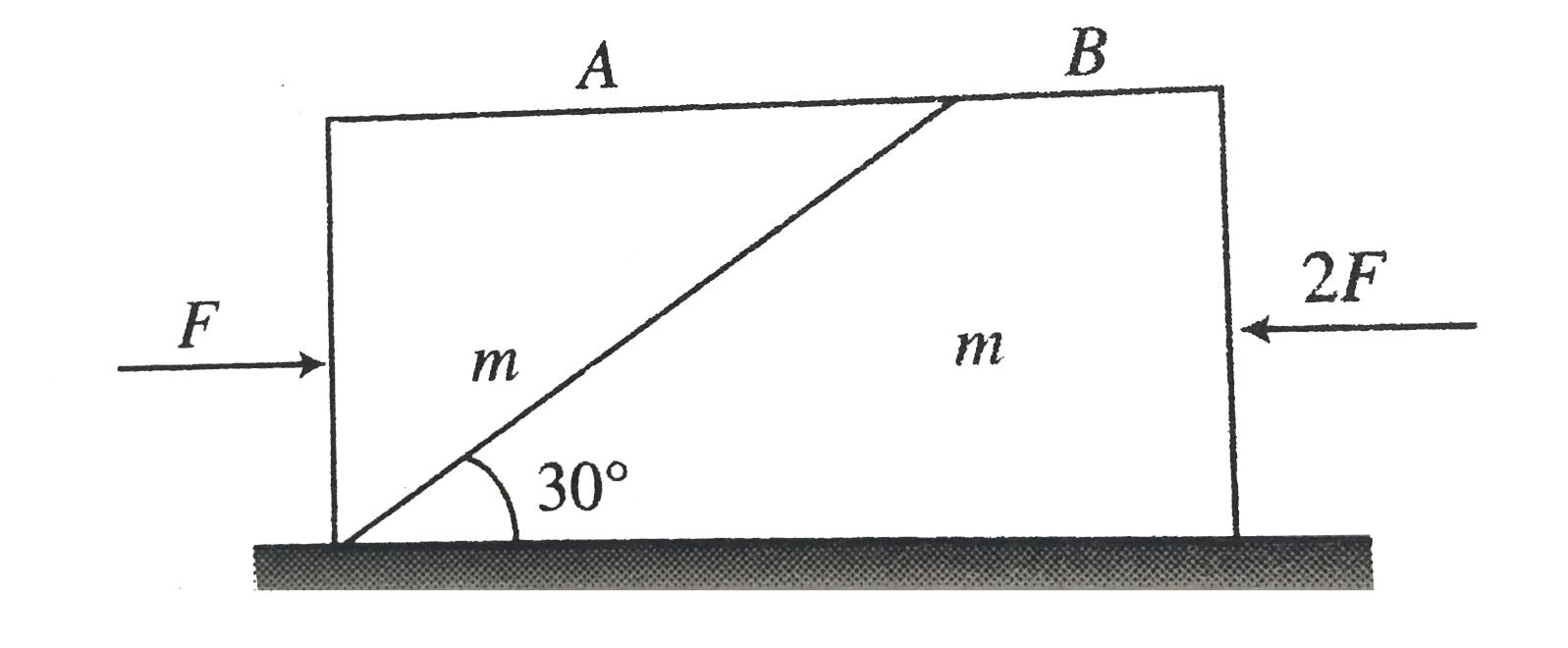Two rough blocks A and B ,A placed over B move with acceleration →aA and →aB veclocities →v(A) and →vB by the action of horizontal forces −→FA and −→FB, respectively. When no friction exsits between the blocks A and B,

vA=vB
aA=aB
Both (a) and (b)
None of the Above
The correct Answer is:C
When friction between the blocks because zero the relative sliding between the block will be stopped bence vA=vB and aA=aBAlso when the friction because zero only forces to move the blocks are FAandFB
aA=aB⇒FAmA=FBmb
Topper's Solved these Questions
- NEWTON'S LAWS OF MOTION 2BOOK - CENGAGE PHYSICSCHAPTER - NEWTON'S LAWS OF MOTION 2EXERCISE - Multiple Correct
2 Videos
- NEWTON'S LAWS OF MOTION 2BOOK - CENGAGE PHYSICSCHAPTER - NEWTON'S LAWS OF MOTION 2EXERCISE - Linked Comprehension
52 Videos
- NEWTON'S LAWS OF MOTION 2BOOK - CENGAGE PHYSICSCHAPTER - NEWTON'S LAWS OF MOTION 2EXERCISE - Subjective
21 Videos
- NEWTON'S LAWS OF MOTION 1BOOK - CENGAGE PHYSICSCHAPTER - NEWTON'S LAWS OF MOTION 1EXERCISE - Integer
5 Videos
- PROPERTIES OF SOLIDS AND FLUIDSBOOK - CENGAGE PHYSICSCHAPTER - PROPERTIES OF SOLIDS AND FLUIDSEXERCISE - INTEGER_TYPE
2 Videos
Similar Questions
In the system shown in figure, all surfaces are smooth, pulley and strings are massless. Mass of both A and B are equal. The system is released from rest.

(a) Find the →aA.→aB immediately after the system is released. →aAand→aB are accelerations of block A and B respectively.
(b) Find →aA immediately after the system is released.
View SolutionIf →a and →B are two vectors such that |→a|=∣∣→b∣∣=√2 and →a.→b=−1, find the angle between →a and →b.
View Solution
Knowledge Check
_2019_CBT8_E01_025_Q01.png)
Two blocks A and B are being accelerated by forces shown in figure with accelerations →a1 and →a2 respectively. The value of |→a1−→a2|A45B85C54D58Two vectors →A and →B are such that ∣∣→A+→B∣∣=∣∣→A−→B∣∣ then what is the angle between →Aand →B :-
A0∘B90∘C60∘D180∘Suppose that two objects A and B are moving with velocities →vA and →vB (each with respect to some common frame of refrence). Let →vAB represent the velocity of A with respect to B. Then
A→vAB+→vBA=0B→vAB−→vBA=0C→vAB=→vA+→vBD|→vAB|≠|→vBA|
Vectors drawn form the origin O to the points A , B and C are respectively →a,band4→a−→b Find −−→ACand−−→BC
View SolutionMagnitudes of the vectors →A,→Band→C are 4, 5 and 3 respectively . What is the angle between →Aand→B, if →A=→B+→C.
View SolutionTwo blocks A and B of masses mA and mB have velocity v and 2v respectively at a given instant A horizontal force F acts on the block A There is no friction between ground and block B and coefficient of friction between A and B is μ The friction

View SolutionThe angle between (→A×→B) and (→B×→A) is :
View SolutionTwo blocks A and B each of mass m are placed on a smooth horizontal surface. Two horizontal force F and 2F are applied on blocks A and B, respectively, as shown in fig. Block A does not slide on block B. Then then the normal reaction acting between the two blocks is (assume no friction between the blocks)

View Solution
